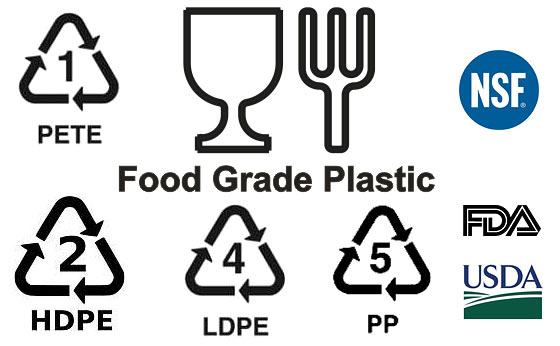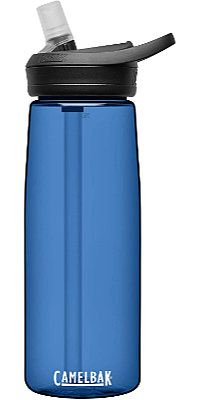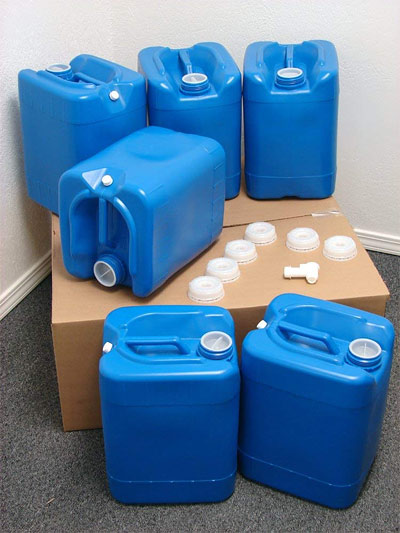Food Grade Plastic (Safe For Containers, Bucket Storage, Water)

Food grade plastic is the only type which should come in contact with food or drink for human consumption.
Here’s how to tell if it’s safe:
Look for the Recycle symbol. Usually stamped on the bottom of the container. Read the number located inside the symbol.
Here’s a cross-reference list. Recycle number (recycling symbol) versus what is generally considered food grade plastic (or not safe!).
Food Grade Plastic Considered Safe
#1, #2, #4, #5 are generally food safe plastic. Here’s more:
#1 PETE (polyethylene terephthalate)
Plastic Water Bottles & Soft Drink Containers
Water, soda, and juice bottles are typically made of #1 PETE. Though be aware that they are not designed for reuse.
#2 HDPE (high density polyethylene)
Plastic milk jugs are a common use for food-safe #2 plastic.
Another use is for food grade storage buckets. However it’s worth noting that not all #2 HDPE buckets are apparently food grade. Read below for more on food grade buckets… ,
#4 LDPE (low density polyethylene)
#4 LDPE is a lightweight plastic. It’s commonly used for shopping bags / grocery store plastic bags. Also the waterproof inner/outer layer for some juice and milk cartons.
#5 PP (polypropylene)
Polypropylene is a very strong durable plastic. It has a high melting point making it ideal for hot-fill liquids. Plastic cups, baby bottles, kitchenware, microwave plastic containers are some of the common uses.
Highly Rated BPA-Free water bottle:
>> CamelBak BPA-Free Water Bottle
(view on amzn)

Risky Plastics Not Safe for Food and Drink
These plastics may leach or have hazardous ingredients:
#3 PVC (polyvinyl chloride) carcinogens during manufacture and incineration
#6 PS (polystyrene) possible carcinogen
#7 PC (usually polycarbonate, sometimes labeled PC) may leach BPA (Bisphenol-A)
Food Grade Buckets
The common 5 gallon bucket. They’re made of #2 HDPE.
If the bucket is considered ‘food grade’ it is typically marketed as such and labeled “Food Grade”, “Food Safe”, etc. Look for the label.
Some food grade buckets or containers will include a cup & fork symbol as an indicator.
A food-grade bucket or container might also be specifically marked as USDA approved (or FDA or NSF approved).
If you will be storing food directly in a plastic bucket or container, or if you will be using the container for drinking water, you might verify the material is food-safe before you purchase.
*Read further notes below.
FOOD GRADE PLASTIC WATER CONTAINERS
The typical ‘blue’ water storage containers or water barrels are also made of high density polyethylene #2 HDPE and are marketed as food safe.
Safe water storage:
>> 5 Gallon Samson Stackers, 6 Pack (30 Gallons)
(view on amzn)

*Notes
Buckets that are not food grade may out-gas and leach into the container, as well as into the contents held within the container.
This is what I’ve read about it:
#2 HDPE buckets that are not food grade may have been manufactured with a non-food-grade “mold release agent”.
In some processes, a mold release agent is what is used to help get the newly shaped plastic off of the hard mold that it was shaped from during the manufacturing process. Without the release agent, the new plastic shape will likely stick to the mold. Some mold release agents enable much faster production than others, but may be toxic to your health if later used with food.
Apparently other processes do not use a mold release agent and only use high pressure compressed air to blow the bottles into shape on the inside. No mold release agent of any kind is used inside the bottles of this process.
If you are unsure, you might simply contact the supplier or manufacturer to confirm.
[ Read: Survival Water Storage ]
